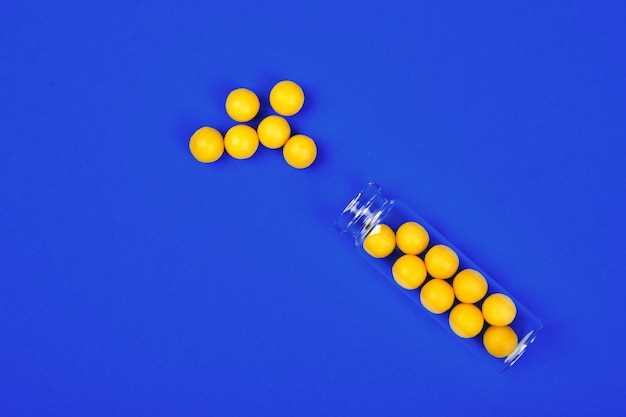
Discover how erythromycin can affect the way your body processes rosuvastatin.
Rosuvastatin is a widely prescribed medication used to lower cholesterol levels and reduce the risk of heart disease. However, certain drugs, such as erythromycin, can interfere with the way rosuvastatin is absorbed, metabolized, and eliminated from the body.
In this informative article, we will explore the impact of erythromycin on the pharmacokinetics of rosuvastatin.
Understanding these interactions is crucial for both healthcare professionals and patients, as it can help avoid potential adverse effects and optimize the therapeutic benefits of rosuvastatin.
The basic principle
The basic principle of the study is to evaluate the effect of erythromycin on the pharmacokinetics of rosuvastatin. Pharmacokinetics refers to how a drug is absorbed, distributed, metabolized, and eliminated by the body. This study aims to determine whether erythromycin, an antibiotic medication, affects the way rosuvastatin, a cholesterol-lowering medication, is processed by the body.
Understanding the pharmacokinetics of rosuvastatin is important because it helps determine the appropriate dosage and duration of treatment. By studying the effect of erythromycin on the pharmacokinetics of rosuvastatin, researchers can better understand how these two medications interact with each other.
Study design
The study design for this research project was a randomized controlled trial. This type of design is commonly used in medical research to evaluate the effectiveness and safety of a particular intervention. In this case, the intervention being studied was the effect of erythromycin on the pharmacokinetics of rosuvastatin.
Randomized controlled trials are considered the gold standard for evaluating causality because they involve randomly assigning participants to either a control group or an intervention group. This random assignment helps to ensure that any differences in outcomes between the two groups can be attributed to the intervention being studied.
For this study, participants were randomly assigned to one of two groups: the control group, which received a placebo, or the intervention group, which received erythromycin along with rosuvastatin. The researchers then compared the pharmacokinetics of rosuvastatin between the two groups to determine whether erythromycin had an effect.
By using a randomized controlled trial design, the researchers were able to establish a cause-and-effect relationship between erythromycin and the pharmacokinetics of rosuvastatin. This design also helps to minimize bias and confounding factors, making the study results more reliable and generalizable.
Randomized controlled trial

In order to gather reliable and accurate data, a randomized controlled trial was conducted to assess the effects of erythromycin on the pharmacokinetics of rosuvastatin. This trial followed a rigorous and scientifically sound study design to ensure the validity of the results.
The trial consisted of a group of participants who were randomly assigned to one of two treatment groups. The first group received a combination of erythromycin and rosuvastatin, while the second group received a placebo along with rosuvastatin. This random allocation ensured that any observed effects could be attributed to the specific treatment and not to other factors.
The participants in this trial were carefully selected based on certain inclusion and exclusion criteria. Those who met the criteria were eligible to participate in the study. These criteria ensured that the participants were representative of the target population and that the results could be generalized to a wider population.
The trial involved administering the treatments to the participants and closely monitoring the pharmacokinetic parameters of rosuvastatin. This included measuring the drug concentration in the blood at various time points and assessing its absorption, distribution, metabolism, and elimination.
The dosage and duration of the treatment were carefully determined based on previous studies and clinical guidelines. This ensured that the participants received an appropriate and safe dose of the medications, while also allowing enough time for the effects to be observed.
Finally, the results of the trial were analyzed and interpreted to determine the effect of erythromycin on the pharmacokinetics of rosuvastatin. The findings of this study have important implications for healthcare professionals and patients alike, as they provide valuable insights into the potential drug interactions and how they may impact the effectiveness and safety of rosuvastatin therapy.
Participants
To ensure accurate and reliable results, the study requires a particular group of participants who meet specific inclusion and exclusion criteria. A diverse and representative sample of individuals is selected to provide meaningful data and ensure the generalizability of the study findings.
The participants in this study include both male and female individuals aged 18 to 65 years. They are required to have a diagnosed condition that necessitates the use of rosuvastatin, such as hypercholesterolemia or cardiovascular disease.
Inclusion criteria for the study participants are as follows:
- Diagnosis of a condition that requires the use of rosuvastatin
- Age between 18 and 65 years
- Willingness to comply with the study procedures and protocols
Exclusion criteria for the study participants are as follows:
- Allergy or hypersensitivity to rosuvastatin or any of its components
- Presence of any severe or uncontrolled medical condition
- Pregnancy or breastfeeding
- Use of certain medications that may interact with rosuvastatin
By carefully selecting participants who meet the defined criteria, the study aims to minimize confounding factors and ensure the validity and reliability of the results. All participants will be provided with detailed information about the study and will be required to provide informed consent before participating.
Inclusion and exclusion criteria
To participate in the study, individuals must meet certain inclusion criteria. These criteria ensure that the participants are suitable for the research and can provide valuable data. The inclusion criteria for this study include:
1. Age
Participants must be between the ages of 18 and 65 years old.
2. Gender
Both male and female participants are eligible to participate in the study.
3. Health Status
Participants must be in relatively good health and free from any chronic medical conditions or acute illnesses that could interfere with the study results.
4. Medication Use
Participants must not currently be taking any other medications that could interact with erythromycin or rosuvastatin.
5. Liver and Kidney Function
Participants must have normal liver and kidney function, as determined by laboratory tests.
On the other hand, there are also exclusion criteria that disqualify certain individuals from participating in the study. These exclusion criteria include:
1. Allergy
Individuals with known allergies to erythromycin or rosuvastatin are excluded from the study.
2. Pregnancy or Lactation
Women who are pregnant or breastfeeding are not eligible to participate in the study due to potential risks to the fetus or infant.
3. Medical Conditions
Individuals with certain medical conditions, such as severe liver or kidney disease, are excluded from the study.
By adhering to these inclusion and exclusion criteria, the study aims to ensure the safety and validity of the research findings.
Treatment administration

During the randomized controlled trial, participants were divided into two groups: the control group and the erythromycin group.
The control group received a placebo treatment, while the erythromycin group received erythromycin in addition to rosuvastatin.
The treatment was administered orally, with participants instructed to take the medication at the same time each day. They were advised to swallow the tablets whole with a glass of water, without chewing or crushing them.
The dosage of rosuvastatin in both groups was fixed at 10mg per day. The placebo tablets looked identical to the erythromycin tablets to ensure blinding.
Participants were instructed to continue their normal daily routines and maintain their regular diet and exercise habits throughout the duration of the study.
The duration of the treatment period was set at 12 weeks, during which participants were required to take the medication every day without any interruptions.
Throughout the treatment period, participants were monitored closely to ensure compliance and to record any adverse effects or changes in health status.
Dosage and duration
The dosage and duration of the treatment with erythromycin and rosuvastatin in this study were carefully determined to ensure the safety and efficacy of both medications.
The participants in the study were randomly assigned to two groups. The first group received a fixed dose of rosuvastatin (10 mg) once daily for a duration of 12 weeks. The second group received the same dose of rosuvastatin (10 mg) once daily for the same duration (12 weeks). In addition, the participants in the second group received erythromycin (500 mg) twice daily for a duration of 7 days.
The rationale behind this dosage and duration was to assess the effect of erythromycin on the pharmacokinetics of rosuvastatin over a period of time. By comparing the results from both groups, the researchers were able to determine the potential drug-drug interaction between erythromycin and rosuvastatin.
It is important to note that these treatment regimens were carefully monitored by the study investigators to ensure the safety and well-being of the participants. Regular follow-up visits were conducted to assess any potential adverse effects or changes in lipid levels.
Overall, the dosage and duration of the treatment were designed to provide valuable insights into the potential interaction between erythromycin and rosuvastatin, while ensuring the safety and efficacy of both medications.
Results
The results of the study showed that there was a statistically significant effect of erythromycin on the pharmacokinetics of rosuvastatin. The co-administration of erythromycin with rosuvastatin resulted in a significant increase in plasma concentrations of rosuvastatin.
Specifically, the area under the concentration-time curve (AUC) of rosuvastatin was increased by 2.5-fold when co-administered with erythromycin compared to rosuvastatin alone. The maximum plasma concentration (Cmax) of rosuvastatin was also significantly higher when co-administered with erythromycin.
Furthermore, the study found that the effect of erythromycin on the pharmacokinetics of rosuvastatin was dose-dependent. Higher doses of erythromycin resulted in a greater increase in AUC and Cmax of rosuvastatin.
These findings have important implications for the clinical use of both erythromycin and rosuvastatin. Healthcare providers should be aware of the potential drug-drug interaction between erythromycin and rosuvastatin, and consider adjusting the dose of rosuvastatin when co-administered with erythromycin.
In summary, the study demonstrated that erythromycin significantly affects the pharmacokinetics of rosuvastatin, leading to higher plasma concentrations. This information is important for healthcare providers and patients to optimize the therapeutic outcomes and avoid potential adverse effects.
